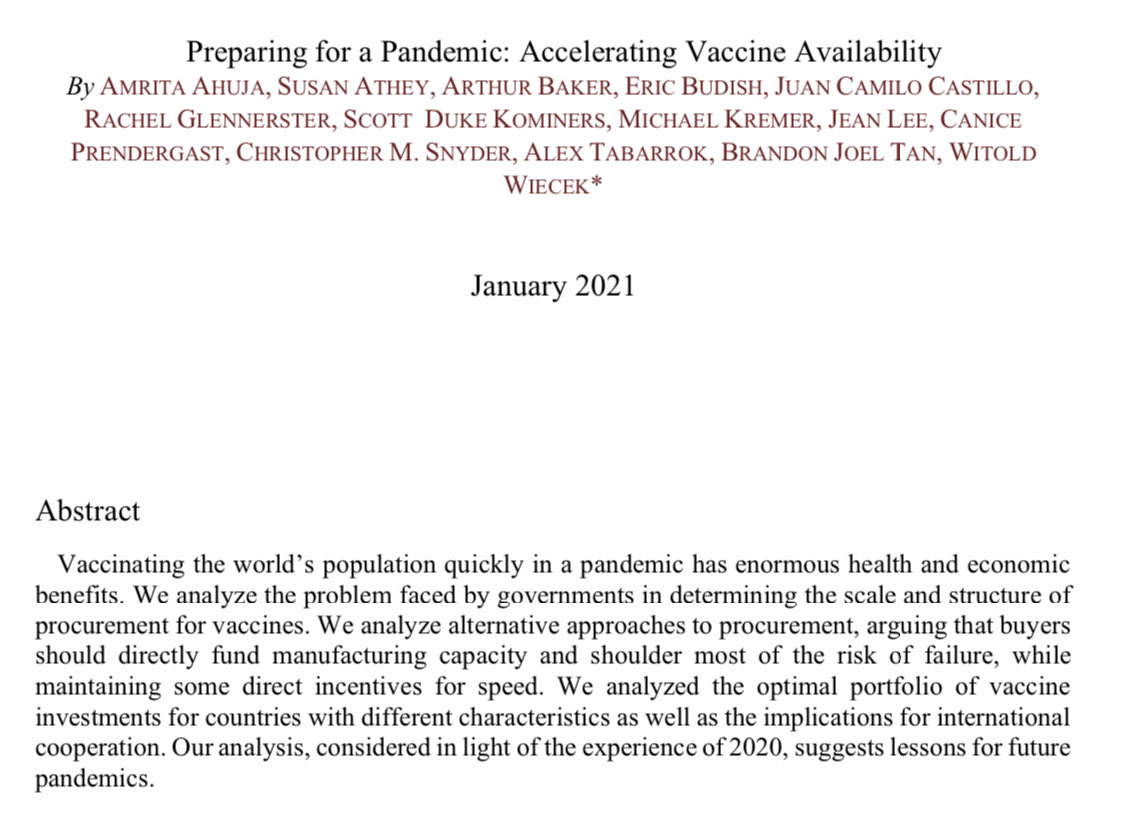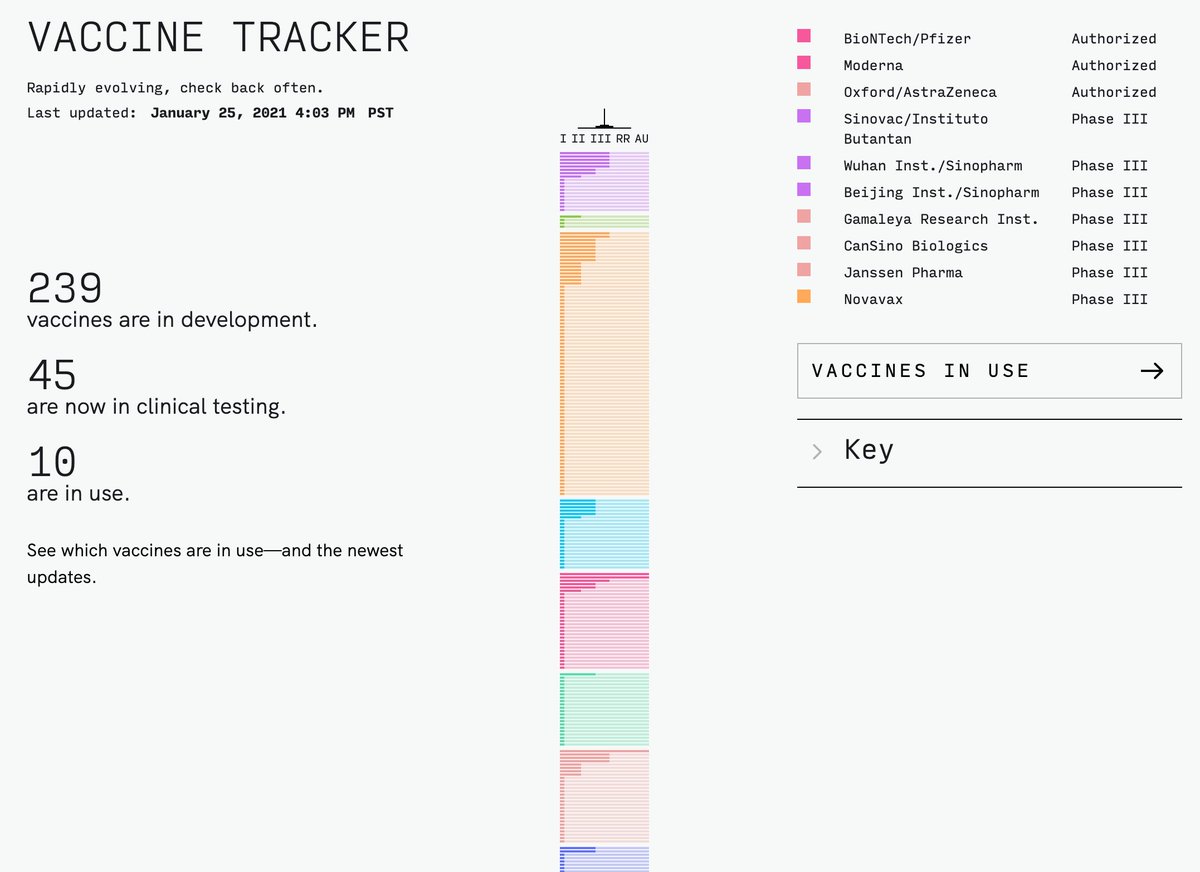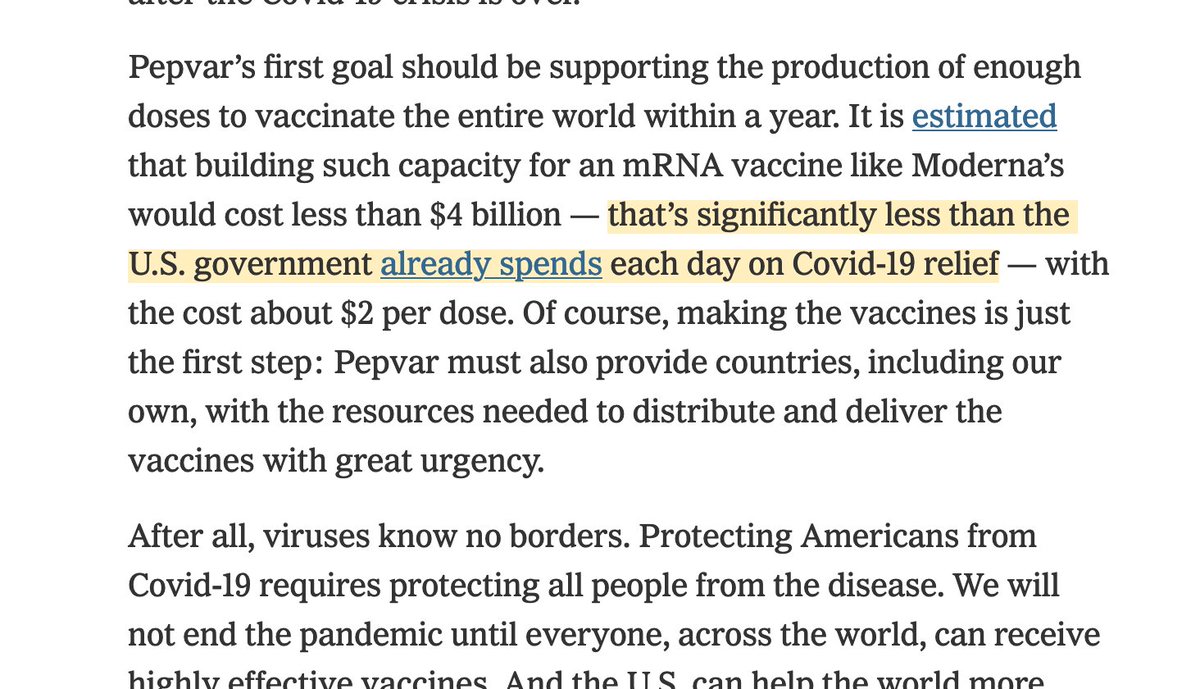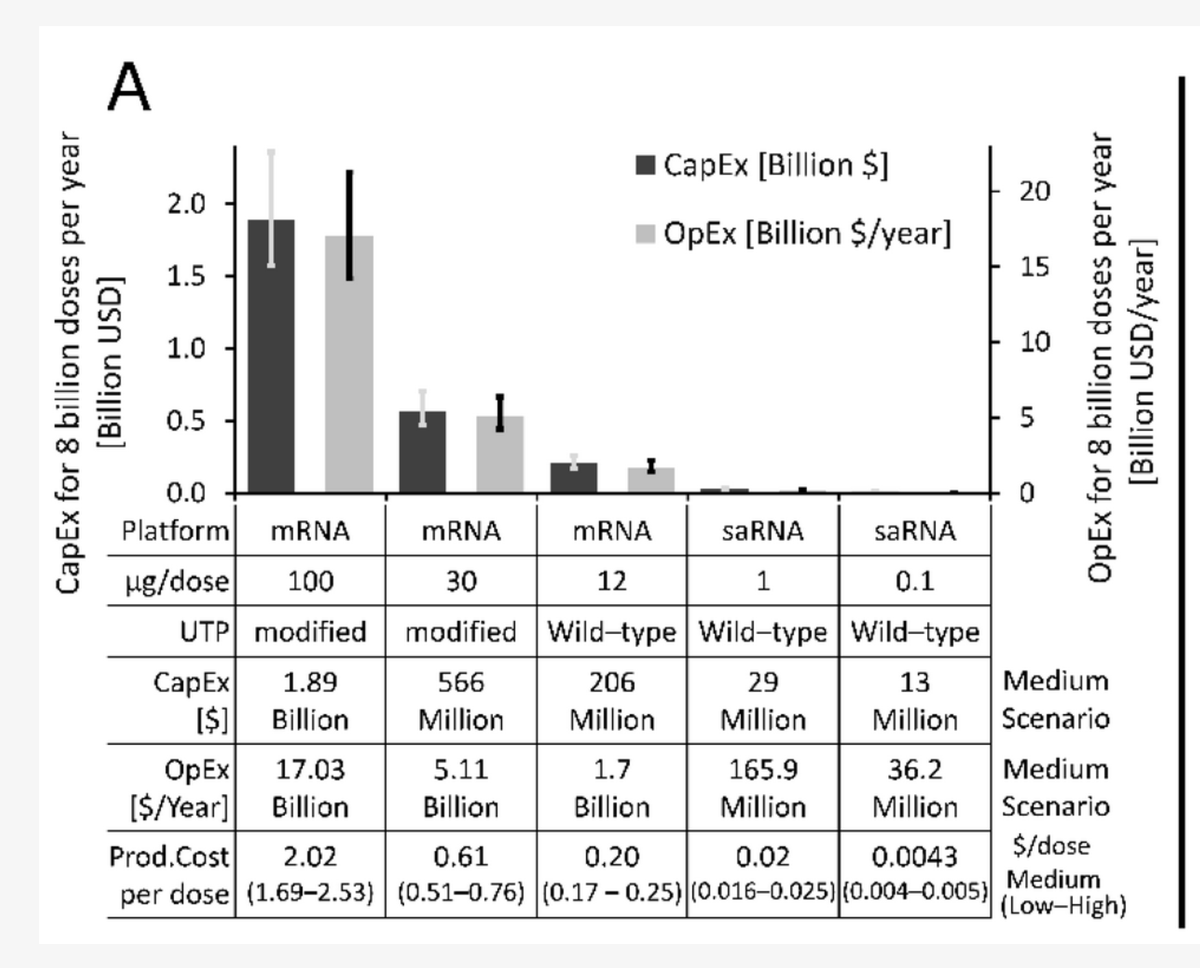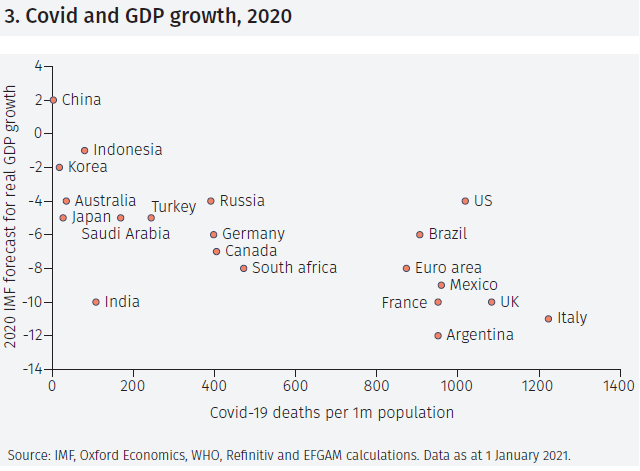
I agree with the goal of a “people’s vaccine” – we need vaccines for the entire world.
But I don’t see how these proposals would get us there.
It seems to me that our global situation is very much worse than these proposals assume.
1/
But I don’t see how these proposals would get us there.
It seems to me that our global situation is very much worse than these proposals assume.
1/
The various "people’s vaccine" proposals want to get rid of intellectual property restrictions for the COVID vaccines so that more vaccines can be produced.
2/
2/
In the past there were such horrible situations in which patent restrictions prevented the world from making progress against diseases.
(For example the patent restrictions on ART that meant that HIV-positive people in poor countries could not get the treatment they needed).
3/
(For example the patent restrictions on ART that meant that HIV-positive people in poor countries could not get the treatment they needed).
3/
But from what I understand – and I might be wrong – the limit for producing more COVID vaccines now is different.
The limit seems to be the small manufacturing capacity for these vaccines, not any restrictions that would prohibit the use of existing capacity.
4/
The limit seems to be the small manufacturing capacity for these vaccines, not any restrictions that would prohibit the use of existing capacity.
4/
For the people’s-vaccine-proposal to possibly work we need to be in a situation in which we have factories that could – and would – produce the vaccines if there were no restrictions on IPs.
It'd be great if we were in that situation. But unfortunately I don’t think we are.
5/
It'd be great if we were in that situation. But unfortunately I don’t think we are.
5/
(If we were indeed in the situation that we do have the capacity to produce many more COVID vaccine doses, why would we not be able to increase production with more money?
I think the answer is, that large unused capacities don’t exist.)
6/
I think the answer is, that large unused capacities don’t exist.)
6/
Here are 3 proposals – what I’m missing is evidence of the central assumption: that the world has big unusued capacity for producing more COVID vaccines that can't be used at the moment.
1] opensocietyfoundations.org/explainers/why…
2] oxfamamerica.org/explore/emerge…
3] theguardian.com/global-develop…
7/
1] opensocietyfoundations.org/explainers/why…
2] oxfamamerica.org/explore/emerge…
3] theguardian.com/global-develop…
7/
If we had unused manufacturing capacity it’d be fantastic.
Getting rid of IP restrictions would then be one option to make progress.
And there would obviously be many more options to produce more vaccines very quickly in that case.
8/
Getting rid of IP restrictions would then be one option to make progress.
And there would obviously be many more options to produce more vaccines very quickly in that case.
8/
I'm not a big fan of 'intellectual property' obviously
[I spend every day building OurWorldInData.org to make intellectual work freely accessible to as many people as I can].
9/
[I spend every day building OurWorldInData.org to make intellectual work freely accessible to as many people as I can].
9/
But in this case I think the discussion of IP restrictions is weakening the public discourse on the central question of 2021.
Getting rid of IP seems to be a proposal that cannot solve the very serious problem the world is facing, which is the limited manufacturing capacity.
10/
Getting rid of IP seems to be a proposal that cannot solve the very serious problem the world is facing, which is the limited manufacturing capacity.
10/
I think the discussion needs to be about the more fundamental problem: How can we increase manufacturing capacity as quickly as possible?
And what can we do to be ready for large scale manufacturing as soon as additional vaccines get approved in the coming months?
11/
And what can we do to be ready for large scale manufacturing as soon as additional vaccines get approved in the coming months?
11/
–– End ––
Here is a related thread from the weekend
Here is a related thread from the weekend
https://twitter.com/MaxCRoser/status/1355659730186866689
And more from some time ago, about the great work by CEPI and COVAX that is actually getting to the heart of the problem we are facing – the capacity to develop and manufacture vaccines rapidly:
https://twitter.com/maxcroser/status/1345799544840343555
• • •
Missing some Tweet in this thread? You can try to
force a refresh

